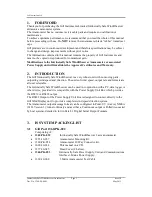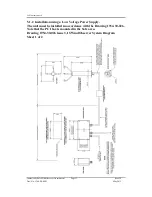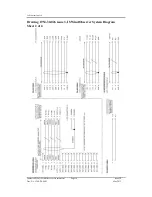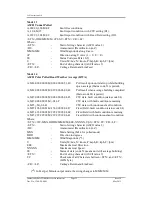
Gill Instruments Ltd
Intrinsically Safe WindObserver Anemometer
Page 18
Issue 10
Doc. No. 1360-PS-0001
May 2015
Anemometer Siting General Guidelines
The Intrinsically Safe WindObserver has been designed to meet and exceed the stringent
standards listed in its specification. Operating in diverse environments all over the world,
Intrinsically Safe WindObserver requires no calibration or adjustment whatsoever.
As with any sophisticated electronics, good engineering practice should be followed to
ensure correct operation.
Always check the installation to ensure the Intrinsically Safe WindObserver is not
affected by other equipment operating locally, which may not conform to current
standards, e.g. radio/radar transmitters, boat engines, generators etc.
Guidelines should any of the following be encountered:-
Avoid mounting in the plane of any radar scanner – a vertical separation of at least
2m should be achieved.
Radio transmitting antennas, the following minimum separations (all round) are
suggested
VHF IMM – 1m
MF/HF – 5m
Satcom – 5m (avoid likely lines of sight)
Ensure the product is correctly earthed in accordance with this manual
Use cables recommended for the IS installation, keeping the length below the maximum
allowed (see Pages 19 and 25). Where the cables are cut and re-connected (junction
boxes, plugs and sockets) the cable screen integrity must be maintained, to prevent the
EMC performance being compromised.
Earth loops should not be created – earth the system in accordance with the installation
guidelines.
Ensure the power supply operates to the Intrinsically Safe WindObserver specification at
all times.
Avoid positioning where gas flare stack temperatures in surrounding air exceed unit
operating limits.
Avoid turbulence caused by surrounding structures that will affect the accuracy of the
Intrinsically Safe WindObserver such as trees, masts and buildings. The World
Meteorological Organisation makes the following recommendation:
The standard exposure of wind instruments over level open terrain is 10m above the
ground. Open terrain is defined as an area where the distance between the sensor and any
obstruction is at least 10 times the height of the obstruction.
When installing the unit degrease the unit and hold with lint free gloves to reduce the
build-up of deposits.
















































